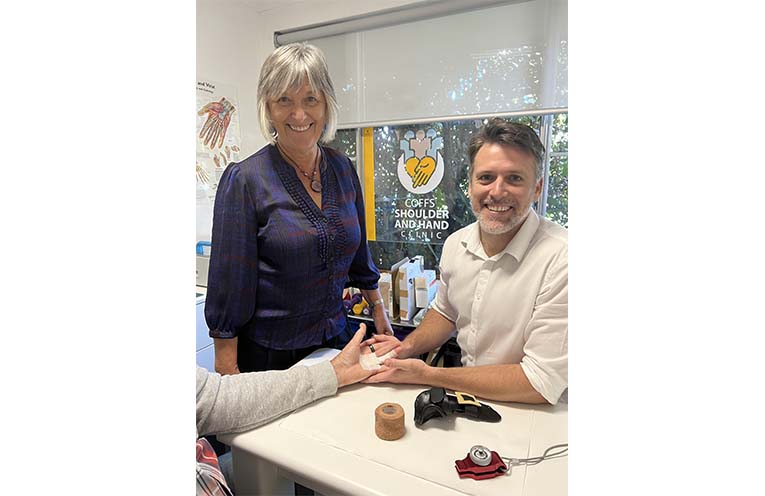
INJURIES to the hand and upper limbs caused by workplace hazards are the focus of Hand Therapy Week 2023 from Monday 5 to Sunday 11 June.
The annual awareness initiative, run by the Australian Hand Therapy Association, cites hazards to be aware of including poor hand ergonomics, mechanical hazards, environmental hazards and skin irritants.
Coffs Harbour based accredited Hand Therapists Faye Wiffen and son Sean Wiffen are qualified physiotherapists with expertise in hands and upper limbs, treating everything from chronic pain to acute injuries.
Faye and Sean work with ten therapists at Coffs Shoulder to Hand Clinic.
Through their work they see multiple workplace injuries every week.
“The disabling impact of a hand injury can vary significantly depending on the severity and nature of any injury but can significantly impact a person’s ability to perform everyday tasks, their work, or their sport/hobby activities,” Faye told News Of The Area.
“Imagine a little finger you cannot fully bend, along with the ring finger they are the main stabilisers in any grip requiring power.
“See how much force you lose trying to use a hammer with your little pinkie out to the side.”
An untreated hand injury can result in a loss of fine motor skills in the hand, or gross grip strength.
Ongoing pain, stiffness in fingers or wrists can impact on a wide variety of ever-day tasks/activities, or even to loss of income and potential career prospects if it impacts on your ability to complete work tasks.
Early assessment and appropriate hand therapy management by skilled, trained hand therapists can avoid potential complications post-injury and hence minimise rehab recovery time and maximise functional outcomes when given in the early stages of the injury.
Sean Wiffen shared a patient’s recent experience.
“I recently treated Jason, a 23-year-old professional fisherman involved in a serious incident at work whilst fishing for tuna in December last year,” Sean told NOTA.
“Whilst using a knife during rough seas he severed the two flexor tendons on the palm side of his left hand little and ring fingers.”
Jason underwent emergency surgery the following day by a skilled hand surgeon to repair the tendons.
“The surgeon referred Jason to us for immediate ‘range of motion’ exercises.
“He came to the clinic three days post-surgery to replace the bulky theatre dressings with lighter ones, to fabricate a custom-made thermoplastic splint and commence a specific protective range of movement exercises.
“This approach aims to optimise outcomes by minimising any early scar formation, which can prevent full natural glide of the tendons once healed.
“In traditional older methods, the hand was rested in a splint for the initial six-week period, which we now know can be problematic for the patient,” he said.
“I supervised Jason’s progress, and he was instructed to follow a strict home routine of exercise and scar massage and splint wear.
“At six weeks it was safe for him to come out of his splint and start on a graduated active movement exercise program.”
After twelve weeks Jason was able to make a full fist, and the strength of his left grip was close to being equal to his dominant right hand.
He could return to his occupation of fishing for tuna and using his left hand without any hindrance.
For more on Hand Therapy Week visit www.ahta.com.au/htw2023.
By Andrea FERRARI
